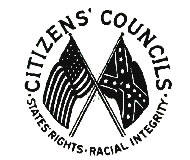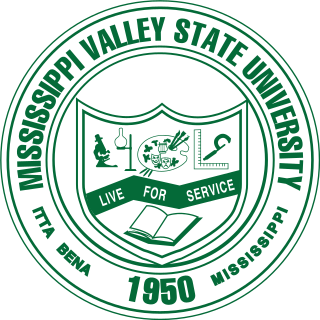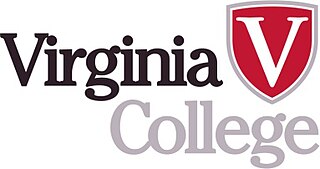Related Research Articles
The Deacons for Defense and Justice was an armed African-American self-defense group founded in November 1964, during the civil rights era in the United States, in the mill town of Jonesboro, Louisiana. On February 21, 1965—the day of Malcolm X's assassination—the first affiliated chapter was founded in Bogalusa, Louisiana, followed by a total of 20 other chapters in this state, Mississippi, Arkansas, and Alabama. It was intended to protect civil rights activists and their families, threatened both by white vigilantes and discriminatory treatment by police under Jim Crow laws. The Bogalusa chapter gained national attention during the summer of 1965 in its violent struggles with the Ku Klux Klan.

The American Southwest Conference (ASC) is an intercollegiate athletic conference, founded in 1996, whose member schools compete in the NCAA's Division III. The schools are located in Texas and Arkansas. The conference competes in baseball, men's and women's basketball, men's and women's cross country, football, men's and women's golf, men's and women's soccer, softball, men's and women's tennis, men's and women's track and field, and women's volleyball.

Robert Lee Thornton Sr. was an American banker, civic leader, and four-term Mayor of Dallas, Texas.

The WhiteCitizens' Councils were an associated network of white supremacist, segregationist organizations in the United States, concentrated in the South and created as part of a white backlash against the US Supreme Court's landmark Brown v. Board of Education ruling. The first was formed on July 11, 1954. The name was changed to the Citizens' Councils of America in 1956. With about 60,000 members across the Southern United States, the groups were founded primarily to oppose racial integration of public schools: the logical conclusion of the Brown v. Board of Education ruling.

Mississippi Valley State University is a public historically black university in Mississippi Valley State, Mississippi, adjacent to Itta Bena, Mississippi. MVSU is a member-school of the Thurgood Marshall College Fund.

The NAACP Legal Defense and Educational Fund, Inc. is an American civil rights organization and law firm based in New York City.

Texas Lutheran University (TLU) is a private Evangelical Lutheran university in Seguin, Texas.
This is a timeline of African-American history, the part of history that deals with African Americans.

Tougaloo College is a private historically black college in the Tougaloo area of Jackson, Mississippi, United States. It is affiliated with the United Church of Christ and Christian Church. It was established in 1869 by New York–based Christian missionaries for the education of freed slaves and their offspring. From 1871 until 1892 the college served as a teachers' training school funded by the state of Mississippi. In 1998, the buildings of the old campus were added to the National Register of Historic Places. Tougaloo College has an extensive history of civic and social activism, including the Tougaloo Nine.

Philander Smith University is a private historically black college in Little Rock, Arkansas. It is affiliated with the United Methodist Church and is a founding member of the United Negro College Fund (UNCF). Philander Smith College is accredited by the Higher Learning Commission.

The Judge Barefoot Sanders Law Magnet is a Dallas Independent School District (DISD) magnet high school located in Dallas, Texas. Formerly the School of Government, Law, and Law Enforcement, it is a part of the Yvonne A. Ewell Townview Magnet Center. The school was renamed in honor of Judge Barefoot Sanders in 2009. Students and faculty refer to the school as the Law Magnet. The Law Magnet allow students to explore careers in government, law, and law enforcement. The school has three pathways: Criminal Justice, Government, and Pre-Law. Students have the option to enroll in the pathway of their choice upon enrolling in the school. The school provides students with a range of experiential learning activities, including project-based learning in the classroom, courtroom observations, and internships. These learning opportunities let students engage with local government, legal professions, and law enforcement in a variety of settings.

Virginia College was a private for-profit college located primarily in the southeastern United States. It offered classes, certificates, diplomas, and degrees related to specific professions such as health sciences, information technology, business, office management, and criminal justice. It also offered online degree programs.
Alexander v. Holmes County Board of Education, 396 U.S. 19 (1969), was a United States Supreme Court case in which the Court ordered immediate desegregation of public schools in the American South. It followed 15 years of delays to integrate by most Southern school boards after the Court's ruling in Brown v. Board of Education (1954) that segregated public schools were unconstitutional.
Medford Bryan Evans was an American college professor, writer, editor, and critic of liberalism in American politics, education, and society. He was the father of the columnist M. Stanton Evans.
Robert Boyd "Tut" Patterson was an American plantation manager and former college football star who is known for founding the first Citizens' Councils, a white supremacist organization, established in Indianola, Mississippi in 1954, in response to the Brown v. Board of Education decision. In 1966 he helped found Pillow Academy, near Greenwood.

In the United States, school integration is the process of ending race-based segregation within American public and private schools. Racial segregation in schools existed throughout most of American history and remains an issue in contemporary education. During the Civil Rights Movement school integration became a priority, but since then de facto segregation has again become prevalent.
This is a timeline of the civil rights movement in the United States, a nonviolent mid-20th century freedom movement to gain legal equality and the enforcement of constitutional rights for people of color. The goals of the movement included securing equal protection under the law, ending legally institutionalized racial discrimination, and gaining equal access to public facilities, education reform, fair housing, and the ability to vote.
The South Central Athletic Conference (SCAC) was an intercollegiate athletic conference of historically black colleges and universities (HBCUs) that existed from 1935 to 1961. The conference's members were located in Arkansas, Louisiana, Mississippi, and Texas.
A training school, or county training school, was a type of segregated school for African American students found in the United States and Canada. In the Southern United States they were established to educate African Americans at elementary and secondary levels, especially as teachers; and in the Northern United States they existed as educational reformatory schools. A few training schools still exist, however they exist in a different context.
The Louisiana State Sovereignty Commission was a government agency of the Louisiana state government established to combat desegregation, which operated from June 1960 to 1967 in the capital city of Baton Rouge, Louisiana. The group warned of "creeping federalism", and opposed school racial integration. It allied with the Louisiana Joint Legislative Committee on Un-American Activities, and coordinated with the Mississippi State Sovereignty Commission.
References
- 1 2 3 "Coaches Named At Vocational". The Louisiana Weekly . New Orleans, Louisiana. July 25, 1959. p. 9. Retrieved December 10, 2022– via Newspapers.com
 .
. - 1 2 3 4 Melody Goss, "74 Graduate in Spring Exercises", The Philanderian: Alumni News of Philander Smith College, Vol. 16, No. 3 (Spring 1992), p. 1-2.
- 1 2 "Faculty Members Employed", The Knoxville Journal (July 8, 1961), p. 8.
- 1 2 "Six Added to Knoxville College Faculty", The Knoxville News-Sentinel (July 9, 1961), p. 15.
- ↑ "New Coaching Staff Named At M.V.C". Jackson Advocate . Jackson, Mississippi. July 25, 1959. p. 7. Retrieved November 28, 2022– via Newspapers.com
 .
. - ↑ "MVC Coach Wins SCAC Grid Title". Pittsburgh Courier . Pittsburgh, Pennsylvania. January 2, 1960. p. 2, section 2. Retrieved December 10, 2022– via Newspapers.com
 .
. - ↑ "MVC Wins SCAC Football Crown". Jackson Advocate. December 19, 1959. p. 6 – via Newspapers.com.
- ↑ "Bell Wins Title In Rookie year", The Louisiana Weekly (January 9, 1960), p. 10.
- ↑ Mississippi Valley State University coaching records Archived August 21, 2008, at the Wayback Machine
- ↑ "Only 9 From KC at Rally, Dean Says", The Knoxville News-Sentinel (April 17, 1963), p. 2.
- ↑ "2 KC Professors Seek Doctorates", The Knoxville News-Sentinel (September 29, 1963), p. 26.
- ↑ "UNCF Grants to 34 Faculty-ites Of 32 Colleges Total $122,540", The Pittsburgh Courier (October 31, 1964), p. 12.
- ↑ John Anthony Bell, "A Study of the Relationship Between Recreation Interest and Participation and Intelligence, Scholastic Achievement, Vocational Interest, and Socio-economic Status of Negro Students Enrolled in the Secondary Public Schools of Eastern Tennessee"; Thesis, 1966.
- ↑ "HEW Asks School Closings", Lubbock Avalanche-Journal (December 19, 1968), p. 1-A, 14-A.
- ↑ "Lubbock's Integration Plan Doubted By U.S.", Austin American-Statesman (October 30, 1969), p. A2.
- ↑ "Integration At Lubbock Challenged", The Amarillo Globe-Times (October 30, 1969), p. 44.
- ↑ "Gilmer School Board Plans Tax Guidelines", The Gilmer Mirror (October 22, 1970), p. 1, 14.
- ↑ "Brady Schools Are Ordered To Stop Transfer Students", San Angelo Standard-Times (June 30, 1971), p. 7.
- ↑ "Answer report", Betty Cardwell, Corpus Christi Caller-Times (February 16, 1973), p. 18C: "Signed by school board president Tom Mason, the response will be sent to Dr. John A. Bell of the OCR in Dallas".
- ↑ "Ethnic plan postponed", Corpus Christi Caller-Times (April 5, 1974), p. 12D: "In the HEW reply, John A. Bell, chief of the Education Branch, Office of Civil Rights in Dallas, noted that his office had accepted a desegregation plan from the local school district".
- ↑ "Ronald Ozio, "Schools get 60-day deadline to ready new bilingual plan", Corpus Christi Caller-Times (September 15, 1977), p. B-1: "In an eight-page letter, John A. Bell of the Dallas HEW office accused the district of failing to properly identify all students needing bilingual instruction... [and] set a 60-day deadline by which the district is to formulate a new bilingual plan".
- ↑ "Discrimination alleged against school board", The Kinder Courier News (October 11, 1979), p. 1: "Kennard gave each copies of a letter he had received on October 1 from Dr. John A. Bell, HEW/Office of Civil Rights, Dallas, Texas".
- ↑ Knights of Ku Klux Klan, Realm of Louisiana v. East Baton Rouge Parish School Bd., 578 F.2d 1122, 1123 (5th Cir. 1978).
- ↑ Clinton Bragg, "Animas Schools deny civil rights complaint", The Deming Headlight (June 30, 1980), p. 9.
- ↑ "Oakdale High To Have Discrimination Probe", The Oakdale Journal (June 10, 1981), p. 1.
- ↑ "Sallisaw Corrects Civil Rights Violations", Sequoyah County Times (January 14, 1982), p. 1.
- ↑ Keely Coghlan, "Consultant evaluates Ector desegregation", San Angelo Standard-Times (June 23, 1989), p. 1C.
- ↑ Penny Brown Roberts, "Study cites low scores in schools", The Shreveport Times (November 19, 1992), p. 1.
- ↑ Steve Mayo, "GISD takes steps towards fulfilling desegregation court order", The Galveston Daily News (November 22, 1996), p. A6-A7.
- ↑ Todd Billiot, "Desegregation report criticizes area schools", The Lafayette Daily Advertiser (May 18, 2000), p. 1.